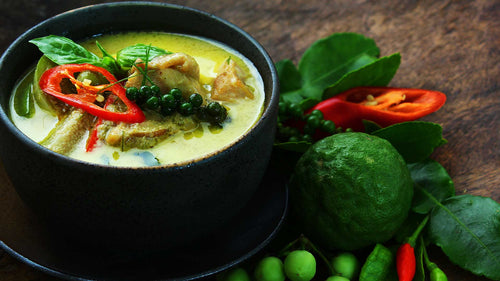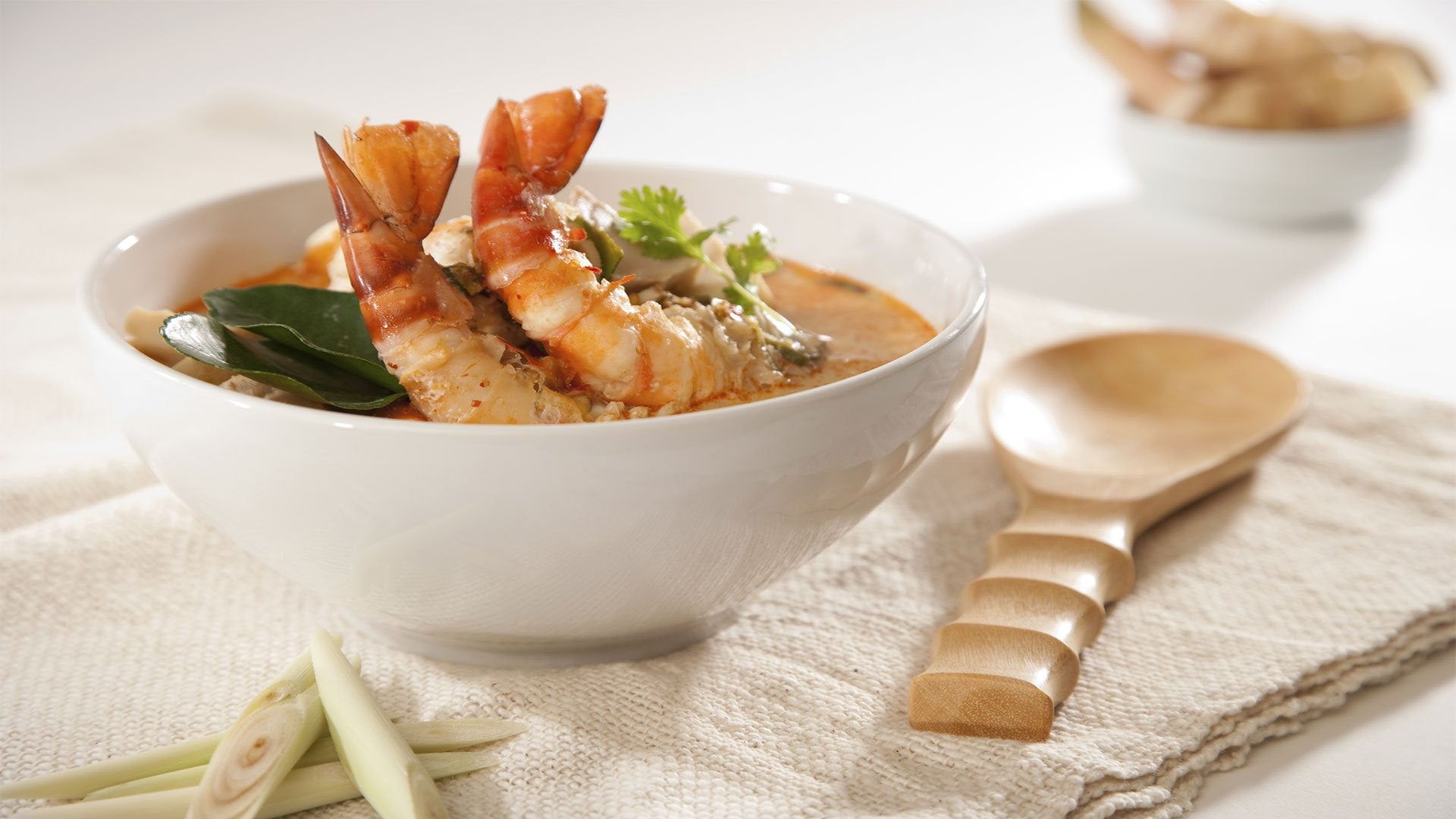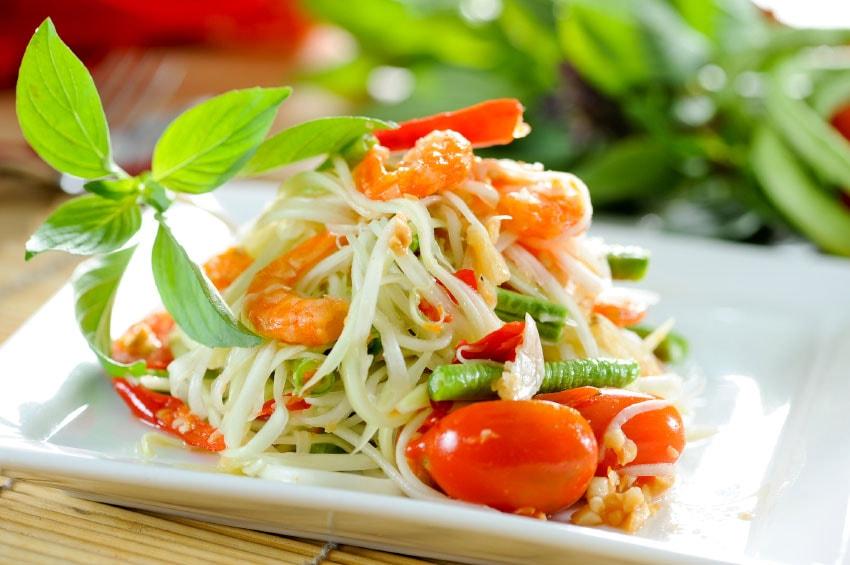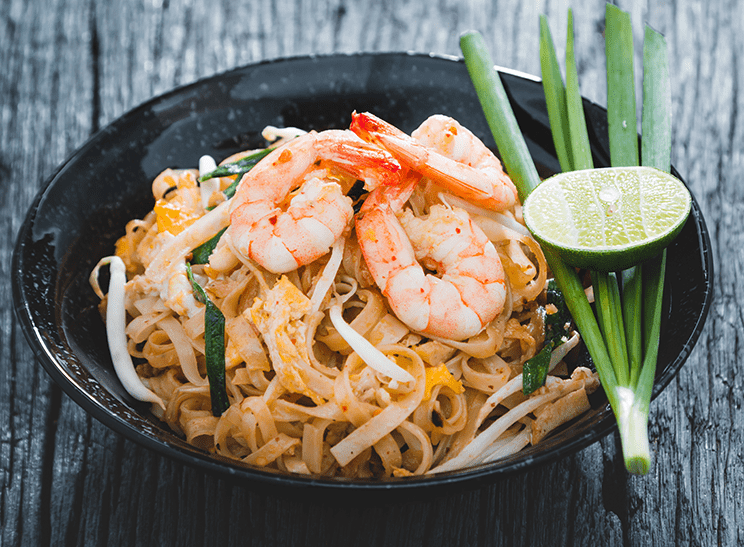What are pandan leaves?
Pandan leaves come from the tropical pandan plant found abundantly in Southeast Asia. In Thailand, pandan leaves are known as ‘Bai Toey’ while in the west, they’re recognised by the name ‘screwpine leaves’. These leaves are renowned for their aromatic fragrance and the bright green hue they bring to recipes when used in both sweet and savoury dishes, in fact, for this very reason, in China it’s known as the ‘fragrant plant’. In places like Thailand and other Southeast Asian countries, pandan leaves are most commonly found raw in their leaf state. However, pandan can also be found as a pandan extract/essence, powder or pandan paste.
What do pandan leaves taste like?
Describing the taste of pandan leaves is quite the challenge because it’s so unique. Many would compare its taste to a blend of sweet, earthy and nutty flavours with subtle hints of vanilla and coconut. The balance of these flavours within pandan leaves are what make it perfect for using to prepare both sweet and savoury meals. If you were to see pandan leaves in person, however, you wouldn’t get to experience the aroma and flavours of the plant unless you heated the leaves to extract the smell and taste.
What’s the difference between pandan leaves and banana leaves?
Pandan leaves often get compared to and confused with banana leaves. While the two are similar, and pandan leaves can certainly be used in place of banana leaves for wrapping and presenting food; the key differences are that pandan leaves are thinner in width and slightly more delicate than banana leaves. So when preparing and/or presenting food in pandan leaves in place of banana leaves, take caution that there may be less space and if the food contains fluid, the juice may leak through the pandan leaves.
How are pandan leaves used in cooking?

In Southeast Asian cooking, pandan leaves are used to infuse fragrant flavours to savoury dishes such as pandan chicken, to cook glutinous rice when steaming or for sweet desserts like traditional Thai coconut milk pudding or chiffon pandan cake (which is widely eaten in Indonesia, Malaysia and Singapore).
Whole pandan leaves are typically used when making savoury dishes, because they are typically used to wrap ingredients like meat or glutinous rice. However, with sweet or dessert recipes, pandan is usually included in a paste or essence form for efficiency and ease of use. Whether using fresh whole pandan leaves, power, paste or extract - pandan definitely adds a lovely green colour to whatever you’re cooking.
How to store and preserve pandan leaves?
Preserved forms of pandan leaves such as powders and extracts are typically easy to store in a cool dark place. This would simply be the pantry or kitchen cupboard. Pandan paste may need to be stored in the refrigerator after opening.
Fresh pandan leaves require the most care when being stored and can either be refrigerated or frozen. To store fresh pandan leaves in the fridge, sprinkle a small amount of water in a plastic bag and wrap the pandan leaves before placing them in the fruit or vegetable drawer of the fridge. When stored in this way, pandan leaves can stay fresh for approximately 5 days.
To freeze pandan leaves, separate the leaves into layers using baking sheets/parchment paper; before wrapping them in a plastic bag and placing them on a flat shelf in the freezer. Frozen pandan leaves can last for up to 6 months but please note freezing pandan leaves can slightly diminish the smell and flavour when used to cook.











Leave a comment